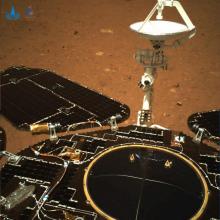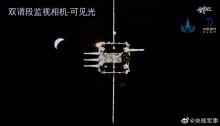Listen to today's episode of StarDate on the web the same day it airs in high-quality streaming audio without any extra ads or announcements. Choose a $8 one-month pass, or listen every day for a year for just $30.
You are here
Moon Goddesses
In the 1960s and ’70s, America and the Soviet Union sent dozens of missions to the Moon. Today, though, lunar exploration is a multi-national enterprise. In recent years, Europe, India, and Japan have all sent spacecraft to the Moon. And five years ago today, China entered the Moon business, too, with the launch of Chang’e 3, named for a Moon goddess. The craft landed on the Moon two weeks later, and deployed a small rover.
The next Chinese mission, Chang’e 4, is scheduled for launch this month. It was built as a backup for the earlier mission, but it’ll carry different instruments. And it has a different target as well — a place that no spacecraft has gone before: the Moon’s far side — the hemisphere that we never see from Earth.
If all goes well, the craft will land in South Pole-Aitken Basin. It’s about 1500 miles wide and eight miles deep. It was carved when a giant space rock hit the Moon billions of years ago.
Chang’e 4 will photograph the surroundings, listen for moonquakes, and analyze the lunar dust. And like its predecessor, it’ll deploy a rover to make additional observations.
To stay in touch with the mission, China launched a communications satellite earlier this year. It’s perched at a point in space where the gravity of Earth and Moon are balanced. That allows it to see Earth and the lunar farside at the same time. And next year, it’ll do some astronomy — monitoring radio waves from deep space.
Script by Damond Benningfield





